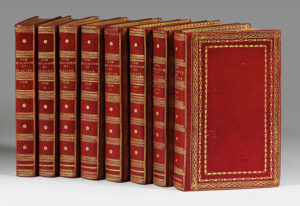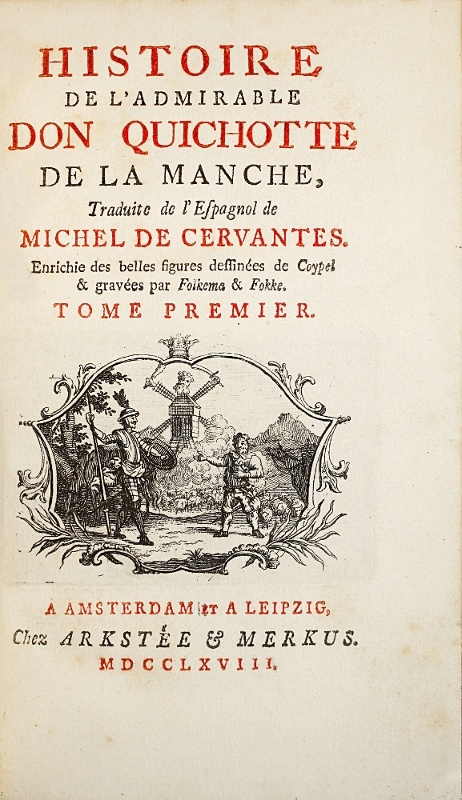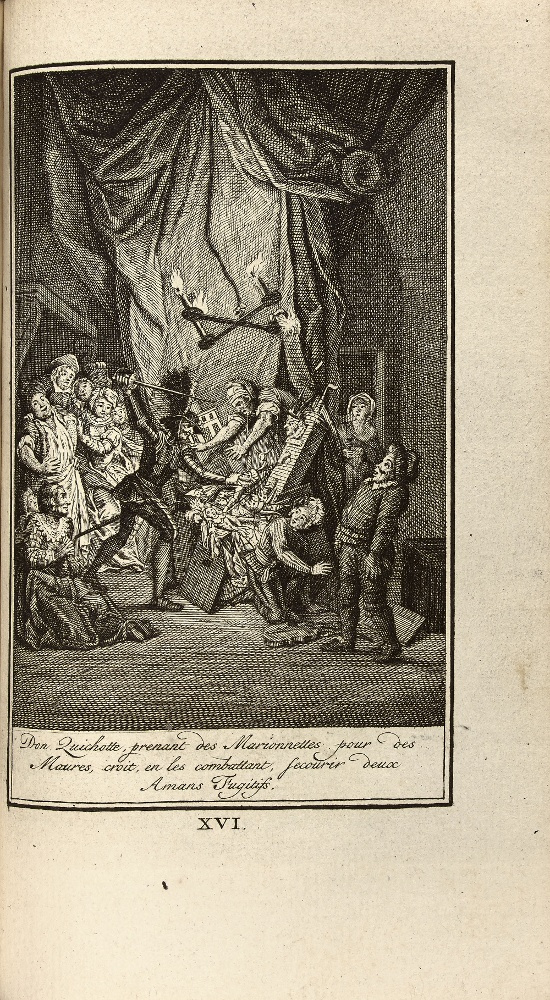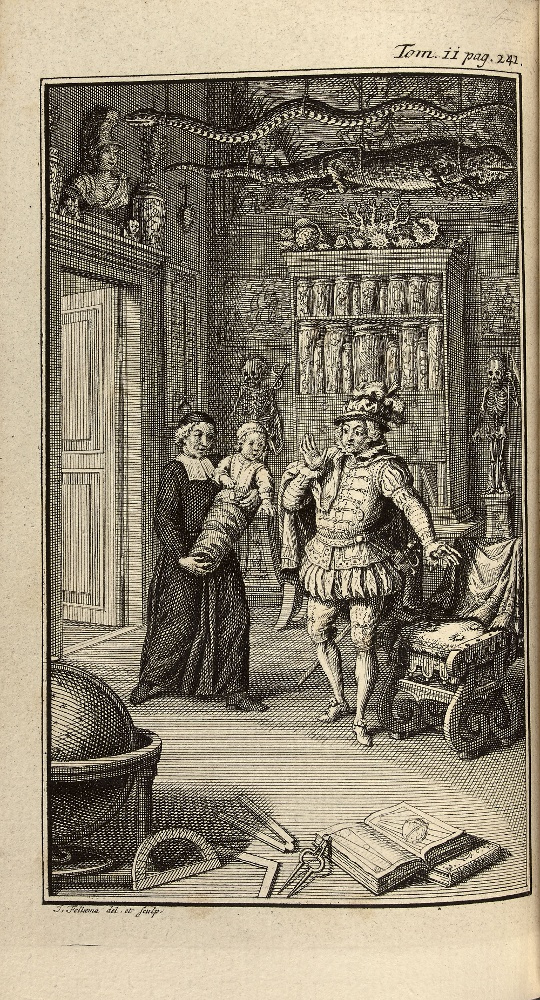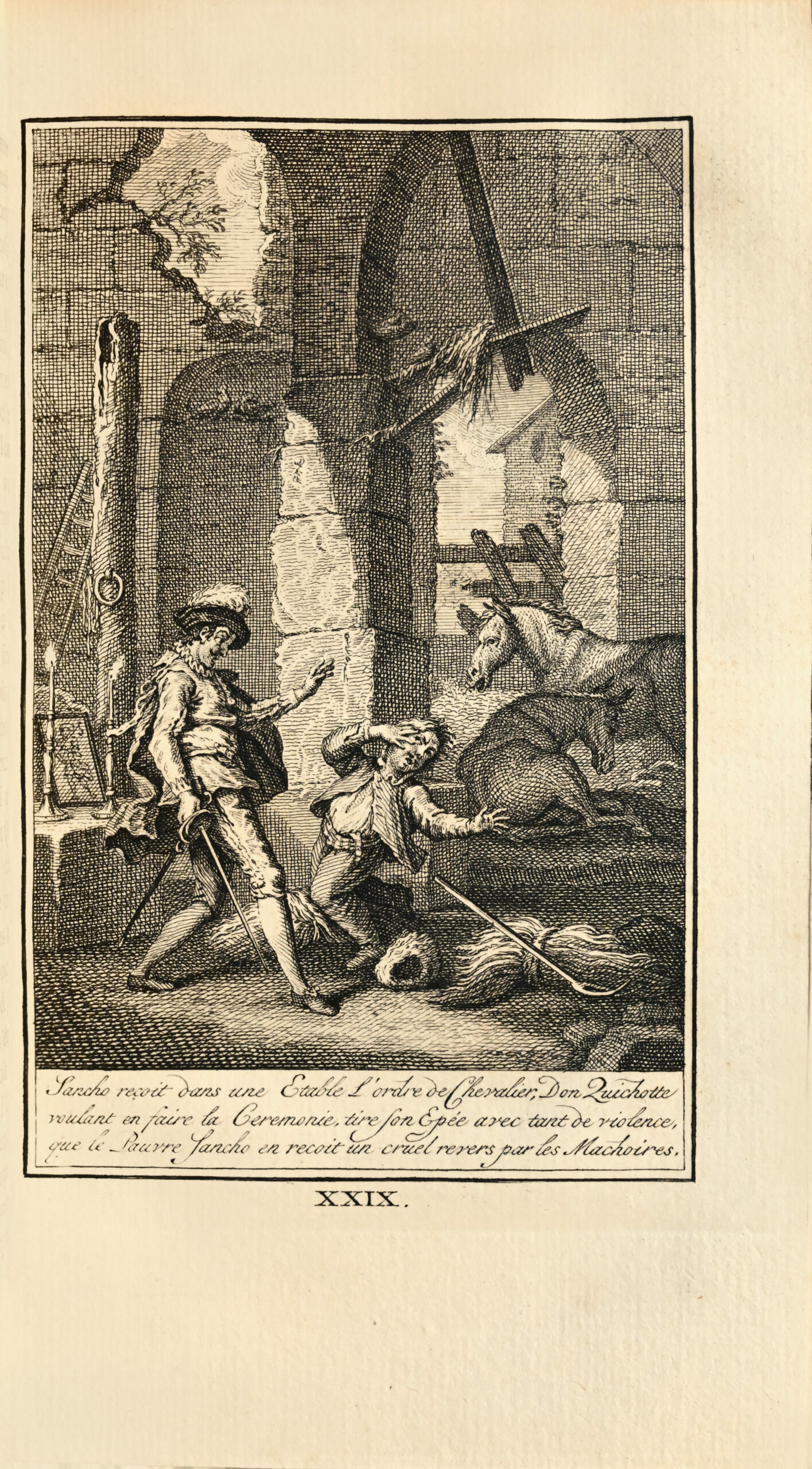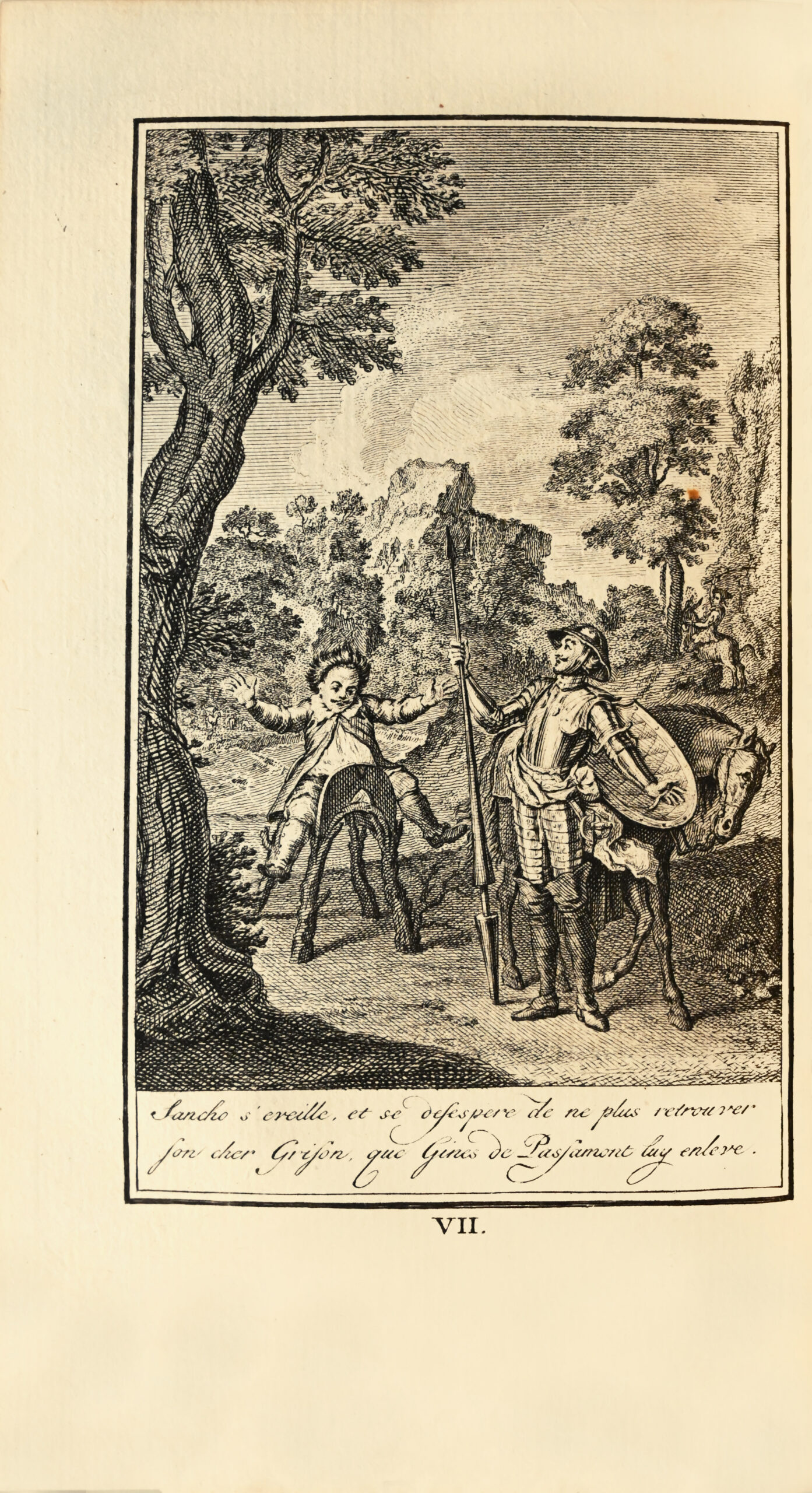Amsterdam and Leipzig, Arkstée & Merkus, 1768.
6 volumes small 8vo.
–Nouvelles de Michel de Cervantès.
Amsterdam & Leipzig, Arkstée & Merkus, 1768.
2 volumes small 8vo.
A total of 8 volumes 8vo [172 x 103 mm] of: I/ (6) ll., 370 pp., 1 engraved half-title and 7 figures including a portrait of the author; II/ (3) ll., 369 pp. and 3 figures; III/ (4) ll., 371 pp. and 10 figures; IV/ (4) ll., 453 pp. and 8 figures; V/ (4) ll., 420 pp. and 4 figures; VI/ (4) ll., 422 pp., (1) l. ; VII/ XLIV pp., 358 pp., and 6 figures; VIII/ (2) ll., 396 pp. and 7 figures.
Contemporary full red morocco, gilt border on covers, flat spines finely decorated, inner gilt border, gilt edges. Contemporary binding by Derôme le Jeune.
Attractive edition of the complete works of cervantes, translated into French by Fillêu de Saint-Martin.
One of the main and best editions of the 18th century. Picot, Livres du Baron de Rothschild, 1752; Cohen, Guide de l’amateur de livres à gravures, 217 and 221; Rahir, p. 360.
“‘Two men of letters, Rabelais and Michel Cervantes, rose up, one in France and the other one in Spain, and shook both monastic and chivalric power. To overthrow these two columns, they employed no other wêpons than ridicule, that natural contrast of human terror.̓ (Bernardin de Saint-Pierre).ˮ (Jên Barbelon).
This edition of « Don Quixote » is illustrated with 31 full-page engravings by Fokke and Folkéma, an engraved half-title and 6 title vignettes.
This series of engravings has its source in the series of 31 engraved prints in 4to size by Picard, Tanjé, Stokke and J. Van Schley from the drawings of Coypel, Boucher and Trémolière in 1746, which will set the iconography of the work for about a century. They are reinterpreted here in the 8vo format.
The « Novelas » are illustrated with a portrait after Kent and with 13 engravings drawned and engraved by Folkéma. In this copy, the portrait of the author has been bound in the first volume.
This set of 44 engravings forms the most important and the most famous work of the artist.
“Born in Dokkum, Friesland, in 1692, Folkéma lêrned the engraving from his father and settled in Amsterdam where he died in 1767.
His most famous work is his in-8 reduction of the figures of Charles Coypel for 'The Adventures of Don Quixote', performed with Fokke for the 1768 edition.”
Portalis, Les Dessinateurs d’illustrations au XVIIIe siècle, pp. 214-215.
This very wide-margined copy, one of the most bêutiful known, was bound by Derôme le Jeune in a particularly elegant red morocco. It is mentioned by Brunet.
See less information
